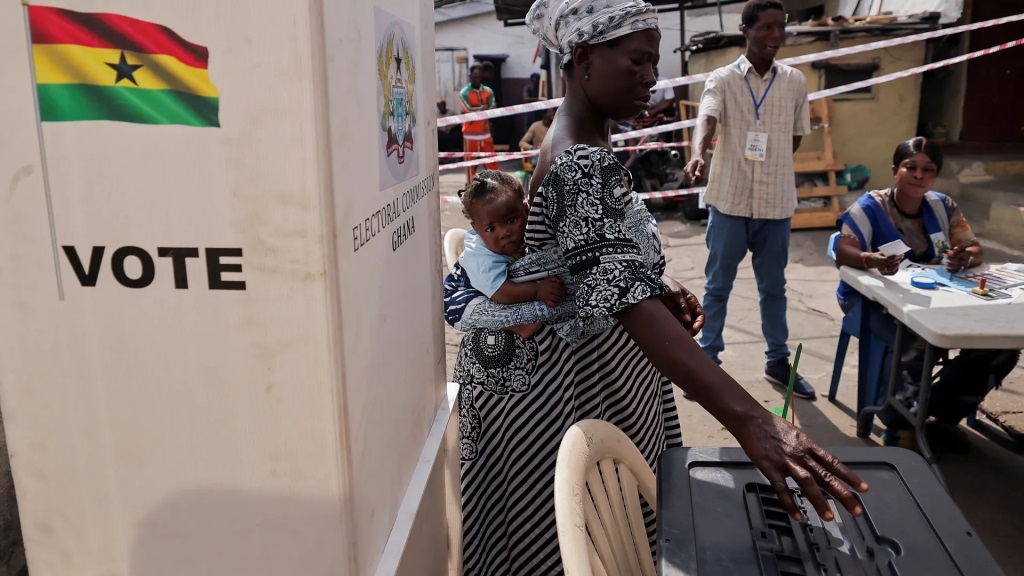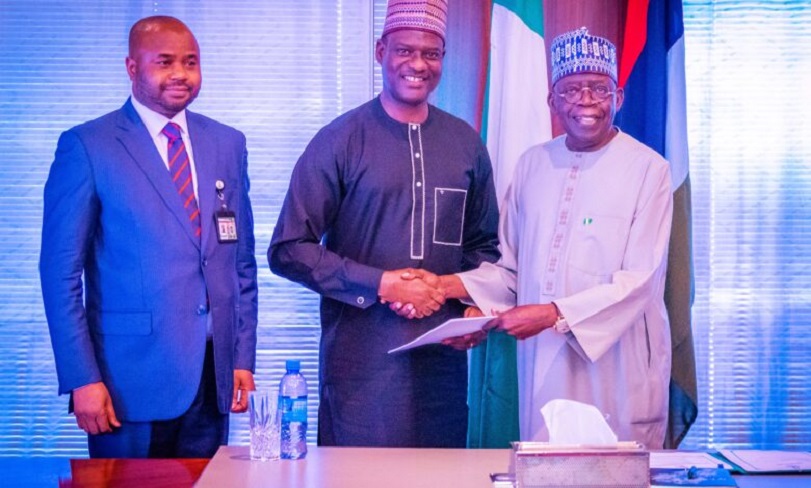Feature/OPED
Nano, Micro, and Small Businesses: Path to Growth with Government Services And Contracts

By Timi Olubiyi, PhD
In today’s turbulent business environment, predominantly with the economic recession, inflation, and the disruptive novel coronavirus (COVID-19) pandemic, strategy becomes the main source of competitive advantage for businesses and organisations.
However, for a strategy to be meaningful, a business must have a reliable and working business and organisational structure.
The fundamental problem that occurs in most businesses particularly the nano, micro, and small-sized enterprises in the country is that they operate informally and how to establish a successful and profitable enterprise in a way to satisfy the common and personal interest is complicated.
I am delighted to correctly inform you that this issue revolves around sound business structure planning. Hence, when a business and its activities are divided, organised, coordinated, and controlled without duplications and are hassle-free, it is said to be structured.
An organisational structure can be seen as ways in which responsibilities and power are allocated and work procedures are carried out in a business by operators and workers.
From context observation small businesses in Nigeria are rarely structured, usually, they have a small working group and face-to-face communication is frequent, this generally undermines formality, business growth, and productivity.
A point to note is that this informal arrangement is prevalent in the country and is a worrisome culture amongst start-ups and small businesses.
Thus, this piece is to share the importance of business formalisation and the need to have organisational procedures, established rules, and responsibilities assigned, regardless of the business size, employee size, revenue generation, or the range of the business function.
Having a business incorporated or registered at the Corporate Affairs Commission (CAC) and setting up a business account in a commercial bank are only the starting points of formalisation of business, structure involves a whole lot more.
The idea of structure in a business is for efficiency and effectiveness because it affects the safety of assets, fundraising, taxation, customer experience, governance, and engagements.
The smooth continuation of any business upon ownership change or succession and the financial information of the business is also affected by the structure in the business. Business requires structure chiefly for continuity, growth, and profitability.
In my view, the efficiency of a business can be measured by how well the business is structured. Therefore, for a business either large, small, or nano to fulfil its purpose and have a mechanism constructed to achieve the purpose, a functional structure has to be in place in the business.
More importantly, functional structure affects business operations in two ways. First, it provides the foundation on which standard operating procedures and routines rest.
Second, it determines which individuals get to participate in which decision – making processes, and thus to what extent their views shape the business operations.
To substantiate the perennial issue of informality and lack of structure among businesses, a survey was conducted on MSMEs in Lagos State, the commercial nerve centre of the country – (The computer village Ikeja, Alaba International Market, and within some market associations (Auto Spare Parts and Machinery Dealers-ASPAMDA and Balogun Business Association) to get more insights.
The survey revealed that a large percentage of close to 97.4 per cent of the respondents who are business owners and SME operators have organic structure (no accountant, no operating software, no technology usage, no rules, and procedures) in their businesses.
With the survey, a high number of poorly run businesses with little or no structure were identified and this is a huge challenge to business continuity.
Some of the issues they face as a result of this informality include high employee turnover, and hiring problems, low productivity, high number of low skilled staff, lack of bookkeeping, and in most cases no accounting or customer/sales data.
However, such data could be used to gain insights into sales, profitability, patronage, and for strategy, implementation to stay ahead of the competition.
More so with such data sets (business and customers) if available, it can help to identify areas of weakness and strength of the business and also ensure no part of the business operation or customer experience is overlooked.
With good structure, businesses can provide exceptional customer service experience and audited financial statements useful for government procurements, services and public contract qualifications.
For a business to have a good structure, these components; the board, the management, business goals, vision, operations, governance, accounting, bookkeeping, human resources, and technology usage have to be defined. Because they have a significant effect on the way the organisation performs its activities and if one component does not fit, the performance of the whole business will be hindered.
For instance, improper accounting systems and bookkeeping can result in financial disaster for a small business or even cause a business failure.
In addition, governance structures and leadership is equally important because it is the frameworks that can help businesses achieve long-term success for all their stakeholders.
Significantly, to improve the structure and efficiency of a business the most central formalisation tool available is the technology and the organizational chart.
We live in an age of high technology development in various sectors and industries, this increasingly improves the adoption of automation for businesses and is, therefore, a more logical way to support business structure. Business structure with technology will reduce operational cost; provides standardized procedure, accountability, and clear reporting among others.
For several reasons, large firms may have a comparative advantage over small businesses however mainly on business and organizational structure.
Nano, micro, and small businesses are poorly structured all across the country, therefore formality and adequate structure are advised for business sustainability and growth. It is also apparent that SME operators need to adopt good governance, prepare a financial statement as at when due, and keep proper records.
It will help such small businesses take other opportunities such as taking part in government services, procurements, Public-Private Partnership (PPP) and contract exercises.
Recall, the government is the biggest procurer of goods and services, operating in the public sector space should be a target, however, it requires adequate formality and structure. If this part of your business is sorted it will be easy to identify and qualify for opportunities within the government and public space. This can provide a leverage considering the current economic realities.
Other opportunities include raising funds in the capital market, attracting foreign direct investment, seeking a loan from the bank, and so on.
Raising long-term funds with low cost through the stock exchange should not be a daunting task for small businesses if a structure and good governance are in place.
In conclusion, to stem the tides of the effect of this current reality and harsh economic climate, businesses need to innovate from an organic structure to a functional structure and divide the organisation into units, based on their function.
When a business environment changes, the organisational strategy needs to change, structure, roles, objectives, and functions should realign with the new realities.
The big question is, has your business acted? If you have a structure, have you done a performance review or done a technology upgrade? If it becomes increasingly difficult to re-engineer or structure your business where necessary, the engagement of knowledgeable professionals can make a substantial impact on your business operations and for strategy advice. Good luck!
How may you obtain advice or further information on the article?
Dr Timi Olubiyi is an Entrepreneurship & Business Management expert with a PhD in Business Administration from Babcock University Nigeria. He is also a prolific investment coach, seasoned scholar, Chartered Member of the Chartered Institute for Securities & Investment (CISI), and Securities and Exchange Commission (SEC) registered capital market operator. He can be reached on the Twitter handle @drtimiolubiyi and via email: [email protected], for any questions, reactions, and comments.
Feature/OPED
The Future of Payments: Key Trends to Watch in 2025

By Luke Kyohere
The global payments landscape is undergoing a rapid transformation. New technologies coupled with the rising demand for seamless, secure, and efficient transactions has spurred on an exciting new era of innovation and growth. With 2025 fast approaching, here are important trends that will shape the future of payments:
1. The rise of real-time payments
Until recently, real-time payments have been used in Africa for cross-border mobile money payments, but less so for traditional payments. We are seeing companies like Mastercard investing in this area, as well as central banks in Africa putting focus on this.
2. Cashless payments will increase
In 2025, we will see the continued acceleration of cashless payments across Africa. B2B payments in particular will also increase. Digital payments began between individuals but are now becoming commonplace for larger corporate transactions.
3. Digital currency will hit mainstream
In the cryptocurrency space, we will see an increase in the use of stablecoins like United States Digital Currency (USDC) and Tether (USDT) which are linked to US dollars. These will come to replace traditional cryptocurrencies as their price point is more stable. This year, many countries will begin preparing for Central Bank Digital Currencies (CBDCs), government-backed digital currencies which use blockchain.
The increased uptake of digital currencies reflects the maturity of distributed ledger technology and improved API availability.
4. Increased government oversight
As adoption of digital currencies will increase, governments will also put more focus into monitoring these flows. In particular, this will centre on companies and banks rather than individuals. The goal of this will be to control and occasionally curb runaway foreign exchange (FX) rates.
5. Business leaders buy into AI technology
In 2025, we will see many business leaders buying into AI through respected providers relying on well-researched platforms and huge data sets. Most companies don’t have the budget to invest in their own research and development in AI, so many are now opting to ‘buy’ into the technology rather than ‘build’ it themselves. Moreover, many businesses are concerned about the risks associated with data ownership and accuracy so buying software is another way to avoid this risk.
6. Continued AI Adoption in Payments
In payments, the proliferation of AI will continue to improve user experience and increase security. To detect fraud, AI is used to track patterns and payment flows in real-time. If unusual activity is detected, the technology can be used to flag or even block payments which may be fraudulent.
When it comes to user experience, we will also see AI being used to improve the interface design of payment platforms. The technology will also increasingly be used for translation for international payment platforms.
7. Rise of Super Apps
To get more from their platforms, mobile network operators are building comprehensive service platforms, integrating multiple payment experiences into a single app. This reflects the shift of many users moving from text-based services to mobile apps. Rather than offering a single service, super apps are packing many other services into a single app. For example, apps which may have previously been used primarily for lending, now have options for saving and paying bills.
8. Business strategy shift
Recent major technological changes will force business leaders to focus on much shorter prediction and reaction cycles. Because the rate of change has been unprecedented in the past year, this will force decision-makers to adapt quickly, be decisive and nimble.
As the payments space evolves, businesses, banks, and governments must continually embrace innovation, collaboration, and prioritise customer needs. These efforts build a more inclusive, secure, and efficient payment system that supports local to global economic growth – enabling true financial inclusion across borders.
Luke Kyohere is the Group Chief Product and Innovation Officer at Onafriq
Feature/OPED
Ghana’s Democratic Triumph: A Call to Action for Nigeria’s 2027 Elections

In a heartfelt statement released today, the Conference of Nigeria Political Parties (CNPP) has extended its warmest congratulations to Ghana’s President-Elect, emphasizing the importance of learning from Ghana’s recent electoral success as Nigeria gears up for its 2027 general elections.
In a statement signed by its Deputy National Publicity Secretary, Comrade James Ezema, the CNPP highlighted the need for Nigeria to reclaim its status as a leader in democratic governance in Africa.
“The recent victory of Ghana’s President-Elect is a testament to the maturity and resilience of Ghana’s democracy,” the CNPP stated. “As we celebrate this achievement, we must reflect on the lessons that Nigeria can learn from our West African neighbour.”
The CNPP’s message underscored the significance of free, fair, and credible elections, a standard that Ghana has set and one that Nigeria has previously achieved under former President Goodluck Jonathan in 2015. “It is high time for Nigeria to reclaim its position as a beacon of democracy in Africa,” the CNPP asserted, calling for a renewed commitment to the electoral process.
Central to CNPP’s message is the insistence that “the will of the people must be supreme in Nigeria’s electoral processes.” The umbrella body of all registered political parties and political associations in Nigeria CNPP emphasized the necessity of an electoral system that genuinely reflects the wishes of the Nigerian populace. “We must strive to create an environment where elections are free from manipulation, violence, and intimidation,” the CNPP urged, calling on the Independent National Electoral Commission (INEC) to take decisive action to ensure the integrity of the electoral process.
The CNPP also expressed concern over premature declarations regarding the 2027 elections, stating, “It is disheartening to note that some individuals are already announcing that there is no vacancy in Aso Rock in 2027. This kind of statement not only undermines the democratic principles that our nation holds dear but also distracts from the pressing need for the current administration to earn the trust of the electorate.”
The CNPP viewed the upcoming elections as a pivotal moment for Nigeria. “The 2027 general elections present a unique opportunity for Nigeria to reclaim its position as a leader in democratic governance in Africa,” it remarked. The body called on all stakeholders — including the executive, legislature, judiciary, the Independent National Electoral Commission (INEC), and civil society organisations — to collaborate in ensuring that elections are transparent, credible, and reflective of the will of the Nigerian people.
As the most populous African country prepares for the 2027 elections, the CNPP urged all Nigerians to remain vigilant and committed to democratic principles. “We must work together to ensure that our elections are free from violence, intimidation, and manipulation,” the statement stated, reaffirming the CNPP’s commitment to promoting a peaceful and credible electoral process.
In conclusion, the CNPP congratulated the President-Elect of Ghana and the Ghanaian people on their remarkable achievements.
“We look forward to learning from their experience and working together to strengthen democracy in our region,” the CNPP concluded.
Feature/OPED
The Need to Promote Equality, Equity and Fairness in Nigeria’s Proposed Tax Reforms

By Kenechukwu Aguolu
The proposed tax reform, involving four tax bills introduced by the Federal Government, has received significant criticism. Notably, it was rejected by the Governors’ Forum but was still forwarded to the National Assembly. Unlike the various bold economic decisions made by this government, concessions will likely need to be made on these tax reforms, which involve legislative amendments and therefore cannot be imposed by the executive. This article highlights the purposes of taxation, the qualities of a good tax system, and some of the implications of the proposed tax reforms.
One of the major purposes of taxation is to generate revenue for the government to finance its activities. A good tax system should raise sufficient revenue for the government to fund its operations, and support economic and infrastructural development. For any country to achieve meaningful progress, its tax-to-GDP ratio should be at least 15%. Currently, Nigeria’s tax-to-GDP ratio is less than 11%. The proposed tax reforms aim to increase this ratio to 18% within the next three years.
A good tax system should also promote income redistribution and equality by implementing progressive tax policies. In line with this, the proposed tax reforms favour low-income earners. For example, individuals earning less than one million naira annually are exempted from personal income tax. Additionally, essential goods and services such as food, accommodation, and transportation, which constitute a significant portion of household consumption for low- and middle-income groups, are to be exempted from VAT.
In addition to equality, a good tax system should ensure equity and fairness, a key area of contention surrounding the proposed reforms. If implemented, the amendments to the Value Added Tax could lead to a significant reduction in the federal allocation for some states; impairing their ability to finance government operations and development projects. The VAT amendments should be holistically revisited to promote fairness and national unity.
The establishment of a single agency to collect government taxes, the Nigeria Revenue Service, could reduce loopholes that have previously resulted in revenue losses, provided proper controls are put in place. It is logically easier to monitor revenue collection by one agency than by multiple agencies. However, this is not a magical solution. With automation, revenue collection can be seamless whether it is managed by one agency or several, as long as monitoring and accountability measures are implemented effectively.
The proposed tax reforms by the Federal Government are well-intentioned. However, all concerns raised by Nigerians should be looked into, and concessions should be made where necessary. Policies are more effective when they are adapted to suit the unique characteristics of a nation, rather than adopted wholesale. A good tax system should aim to raise sufficient revenue, ensure equitable income distribution, and promote equality, equity, and fairness.
-

 Feature/OPED5 years ago
Feature/OPED5 years agoDavos was Different this year
-
Travel/Tourism8 years ago
Lagos Seals Western Lodge Hotel In Ikorodu
-

 Showbiz2 years ago
Showbiz2 years agoEstranged Lover Releases Videos of Empress Njamah Bathing
-

 Banking6 years ago
Banking6 years agoSort Codes of GTBank Branches in Nigeria
-

 Economy2 years ago
Economy2 years agoSubsidy Removal: CNG at N130 Per Litre Cheaper Than Petrol—IPMAN
-

 Banking2 years ago
Banking2 years agoFirst Bank Announces Planned Downtime
-

 Sports2 years ago
Sports2 years agoHighest Paid Nigerian Footballer – How Much Do Nigerian Footballers Earn
-

 Technology4 years ago
Technology4 years agoHow To Link Your MTN, Airtel, Glo, 9mobile Lines to NIN























